Crossover Basketball & Scholars Academy- Creating Hope Through Hoops
08-03-2015
The following article was posted by Gopalakrishnan R in Ekalavyas.
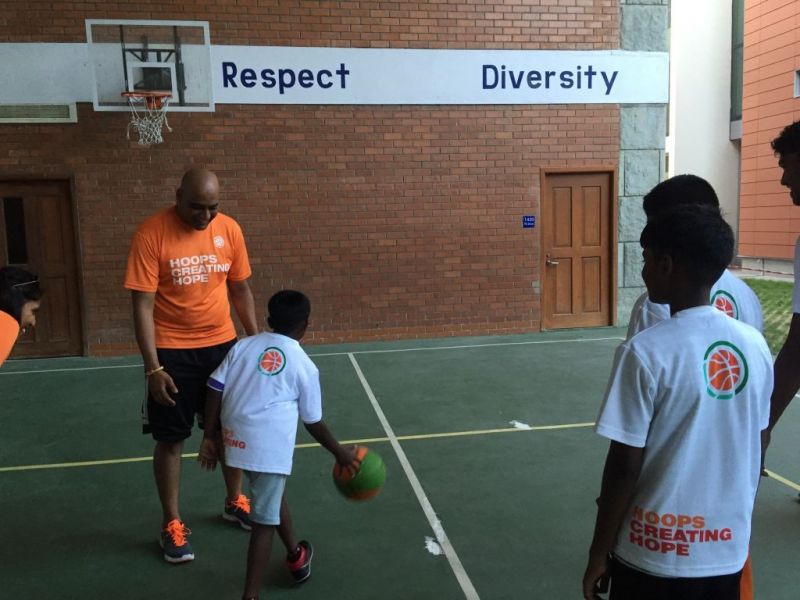
A student from Caldwell School (over 600km away) works on his crossover dribble in front of Shaun Jayachandran.
Every summer, the American International School in Chennai plays host to a unique basketball training camp. This camp isn’t conducted to produce the next generation of elite basketball players, nor is it your typical “summer training” that most schools organise in between two academic years. The camp, run by Crossover Basketball & Scholars Academy strives for much more. As its Indian-American founder Shaun Jayachandran puts it “the primary objective is to impact the disturbingly low education rate in India” and “give the children of the next generation the hope and choice to pursue any career path.”
Can a mere basketball camp truly aspire for such high goals? Can hoops really create such hope? Having successfully concluded their fourth straight programme in Chennai over a fortnight last June-July, and with 400 children registered in their latest 2015 Academy, the answer to both questions seems to be a resounding yes.
We spoke to Shaun via email, and he shared with us the thought process behind choosing basketball as the vehicle to drive this initiative, his roots in the city, the enthusiasm of many of his volunteer coaches who travel halfway across the globe to work for free, and future plans for expansion.
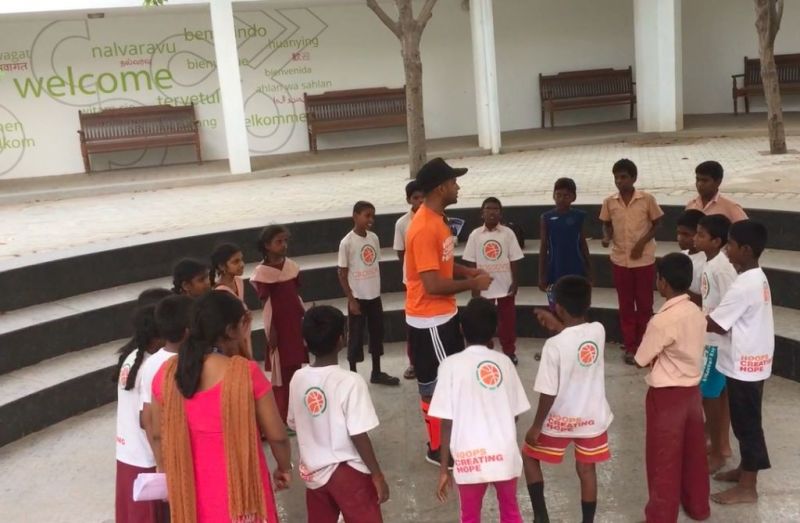
Indian-American Hollywood actor Utkarsh Ambudkar teaches communication through Beat Boxing.
1) Life skills training: Why through basketball?
Our primary objective is much more than life skills but actually to impact the disturbingly low overall education rate in India. We truly want to go past producing a less poor rickshaw driver or less poor house servant and actually have these children of the next generation have the hope and choice to pursue any career path and raise themselves beyond the bottom of the socio-economic pyramid.
Basketball is the perfect sport for India – it’s high energy, low space, low cost, ten people can play with one ball and basket – and it is constantly associated with education in the US from the high school and college level. It absolutely evokes the idea of working together for a goal that raises everyone.
2) Tell us about your roots. When and how did Crossover come into being?
While I was born and raised in Calgary, Canada until 16 before moving to the Washington DC area, my roots stem from both of my parents being from Chennai. Crossover came into being as I watched the beginning points of the expansion of the game I love into India – but through an approach that mimicked other countries without a unique approach to India. As an Indian-American educator, it was important to think of ways to connect education back to the sport. Hence the theory of Crossover came into being and has continued to evolve.
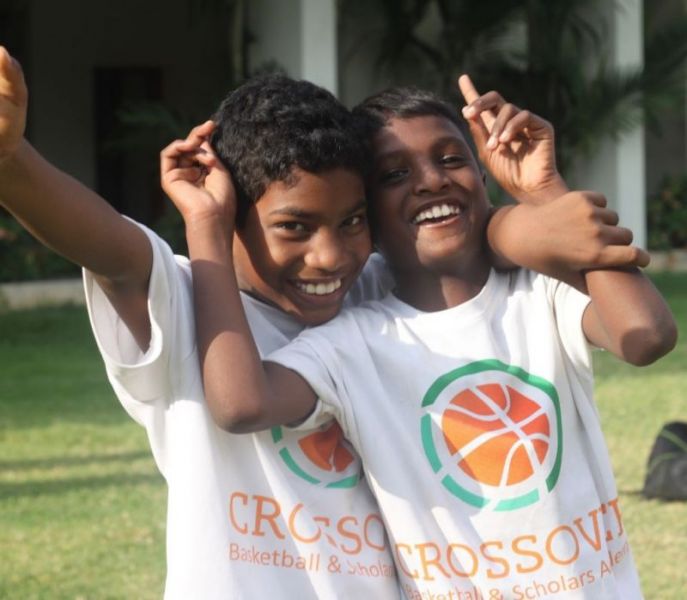
3) How many coaches this time? What are their backgrounds? Are all of them American?
We had 26 total volunteers this year at Crossover – 17 from the US and 9 locally from India (5 of whom are Crossover alums). Our volunteers range from being professionals, college athletes, college students, and high school student athletes. Our top student-athletes are Varun Ram (Maryland), Shilpa Tummala (Harvard), Sai Tummala (Arizona State), AJ Mathew (Chaminade), Kiran Shastri (Chaminade), Shilpa Agrawal (MIT), – all Indian American – and also Kasey Hartung (Tufts), and RJ Paige (Princeton).
4) How many editions so far in India, how has the response been?
This was our fourth program. The response has been phenomenal thus far with plenty of interest both in Chennai and from other cities. Our next step is translating that into sponsorships from corporations in order to help us impact more students and create more student-athletes.
Shilpa Tummala (Harvard) begins a lesson with students about ball-handling and leadership.
Shilpa Tummala (Harvard) begins a lesson with students about ball-handling and leadership.
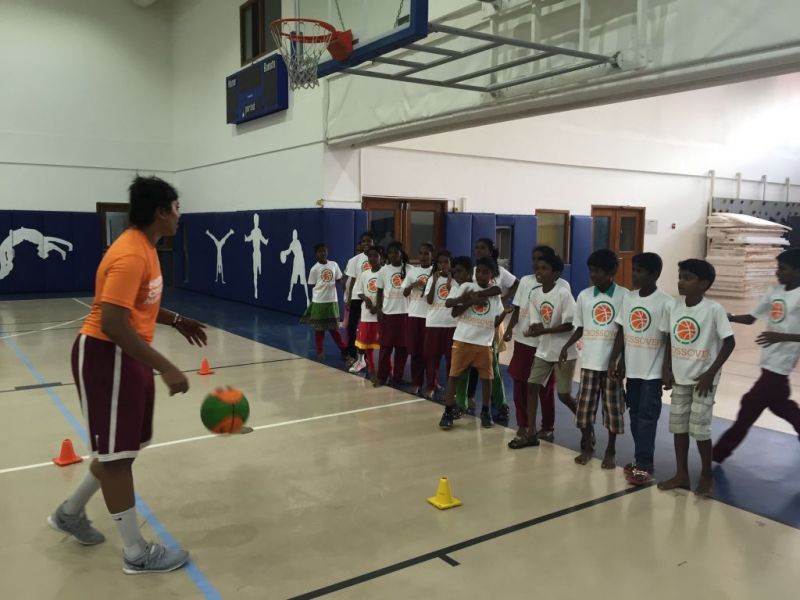
Shilpa Tummala (Harvard) begins a lesson with students about ball-handling and leadership.
5) Future plans? Expanding to more cities in India?
Our next phase would be to create a Crossover fellowship program where recent university graduates live in Chennai and follow up weekly on each of our students. This will further create sustained lasting impact as we track each alum of our program and ensure that they have support in their pursuits. Establishing this will allow us to therefore expand our model to other cities with confidence in our impact on education.
6) You host this in an international school in Chennai. Tell us about the location, in terms of permissions & support?
The use of American International School Chennai is through the spirit of Andrew Hoover – Head of School. He believed in our vision after our pilot program and helped create a partnership with Crossover. The facilities are first-class with an indoor gym, outdoor court, turf-field playing surface, soccer field, auditorium, atrium, and cafeterias. Security is of the utmost importance and therefore tracking each student and their school is imperative. They are helpful in coordinating, in our housing, in providing drivers, and our ability to coordinate with local businesses.
7) What is the profile of the kids & their families like?
The majority of our students come from families who earn under 150 INR/day. They live in the slums in one room locations and one or multiple parents abuse alcohol.
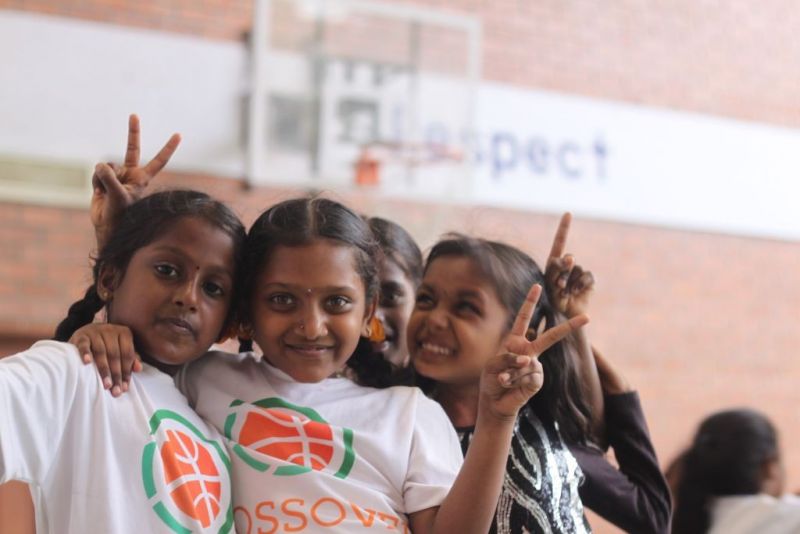
8) How do you manage finances?
We are very careful with our expenses. In bringing the best possible experience to our students, we run a lean nonprofit model with ZERO paid employees at this point. We operate on donations and sincerely provide the best possible program with amazing role-models.
9) Usually a fortnightly camp every year. Is this enough? What happens to the kids when your team heads back to the US?
Our program runs for two-weeks currently for three-hours daily along with visiting schools and working with other NGOs. It goes beyond that however in our work with the student’s teachers – creating lesson plans and extended impact programming. We look to track the educational experience of each of our students, and continue to see their advancement in education.
